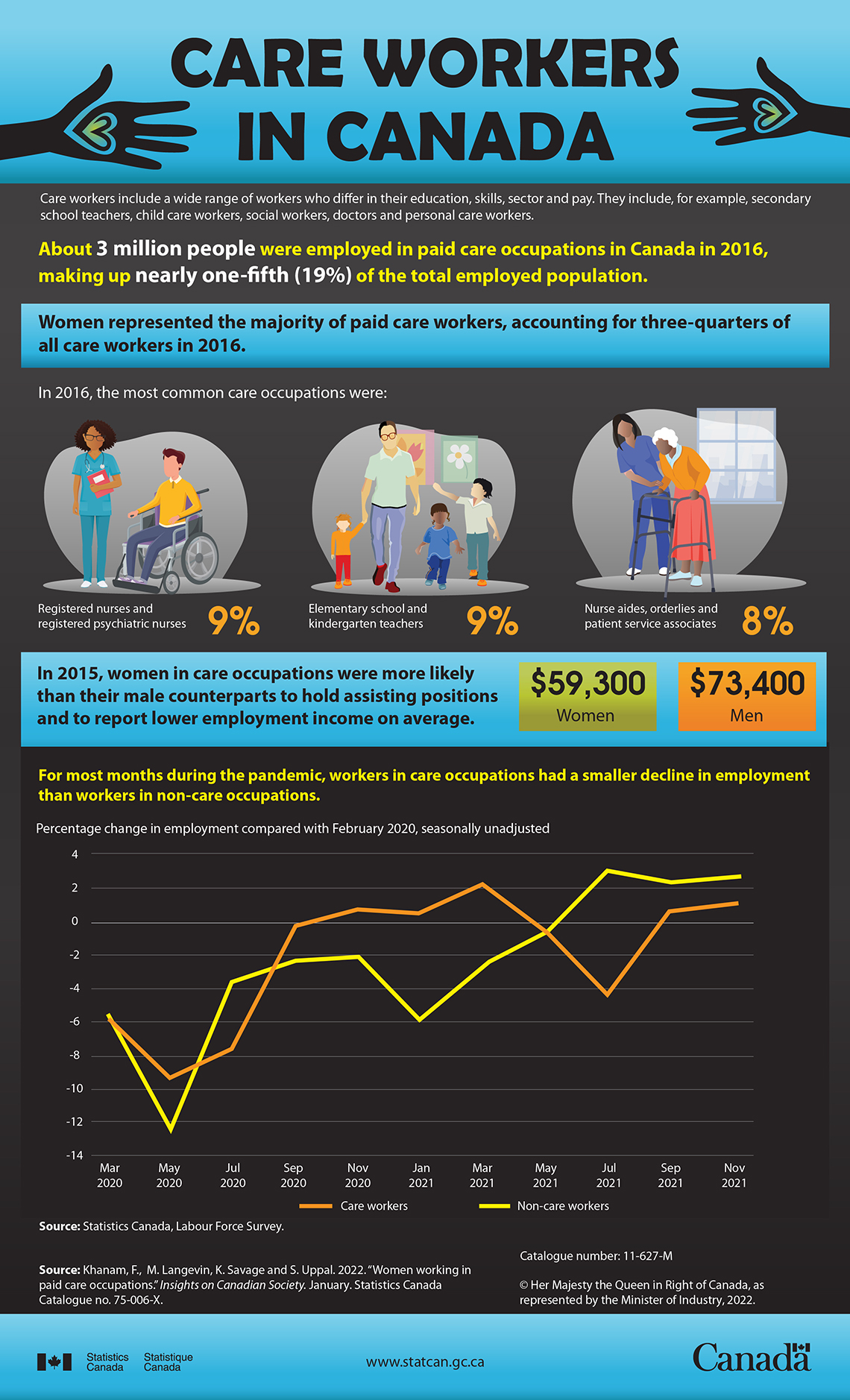Care workers in Canada
Archived Content
Information identified as archived is provided for reference, research or recordkeeping purposes. It is not subject to the Government of Canada Web Standards and has not been altered or updated since it was archived. Please "contact us" to request a format other than those available.

Description: Care workers in Canada
Care workers include a wide range of workers who differ in their education, skills, sector and pay. They include, for example, secondary school teachers, child care workers, social workers, doctors and personal care workers.
About 3 million people were employed in paid care occupations in Canada in 2016, making up nearly one-fifth (19%) of the total employed population.
Women represented the majority of paid care workers, accounting for three-quarters of all care workers in 2016.
In 2016, the most common care occupations were:
- Registered nurses and registered psychiatric nurses (9%)
- Elementary school and kindergarten teachers (9%)
- Nurse aides, orderlies and patient service associates (8%).
In 2015, women in care occupations were more likely than their male counterparts to hold assisting positions and to report lower employment income on average.
- Women: $59,300
- Men: $73,400
For most months during the pandemic, workers in care occupations had a smaller decline in employment than workers in non-care occupations.
| Care workers | Non-care workers | |
|---|---|---|
| percentage | ||
| March 2020 | -5.8 | -5.5 |
| May 2020 | -9.4 | -12.5 |
| July 2020 | -7.6 | -3.6 |
| September 2020 | -0.2 | -2.4 |
| November 2020 | +0.6 | -2.1 |
| January 2021 | +0.3 | -5.9 |
| March 2021 | +2.2 | -2.7 |
| May 2021 | -0.6 | -0.7 |
| July 2021 | -4.4 | +2.9 |
| September 2021 | +0.5 | +2.3 |
| November 2021 | +1.1 | +2.8 |
| Source: Statistics Canada, Labour Force Survey. | ||
Source: Khanam, F., M. Langevin, K. Savage and S. Uppal. 2022. “Women working in paid care occupations.” Insights on Canadian Society. January. Statistics Canada Catalogue no. 75-006-X.
- Date modified:
